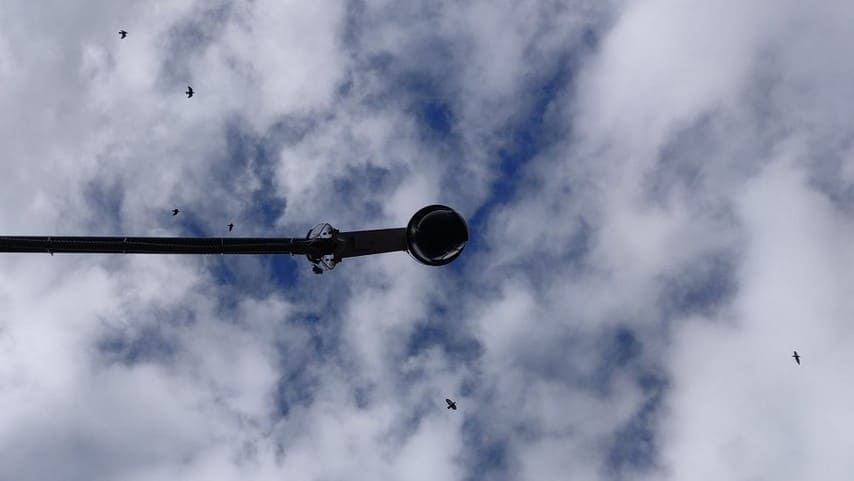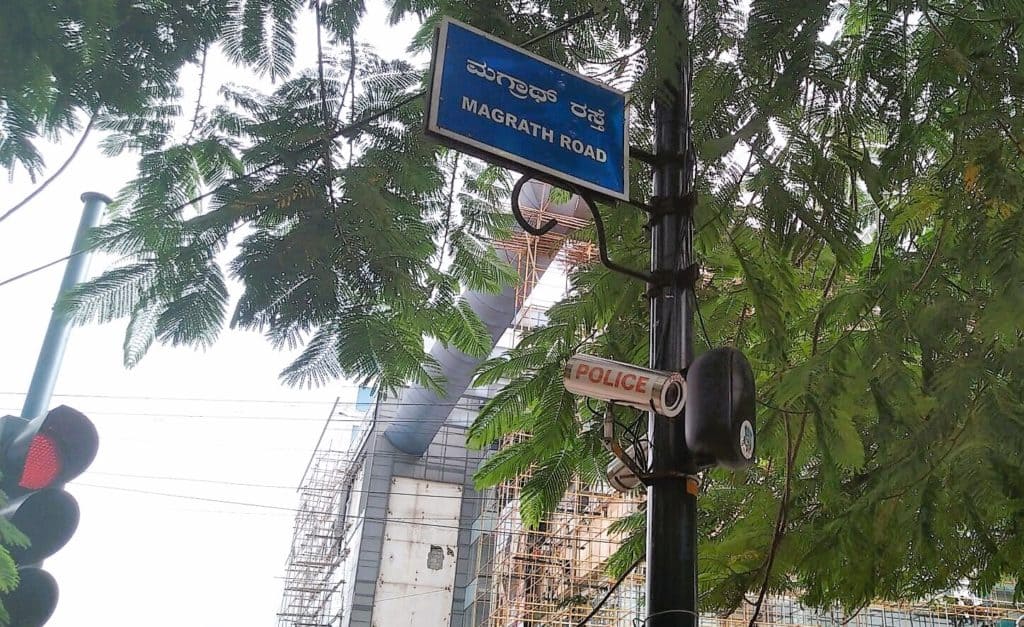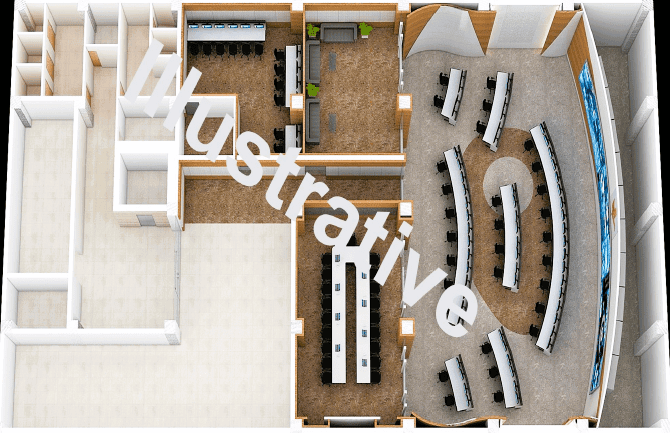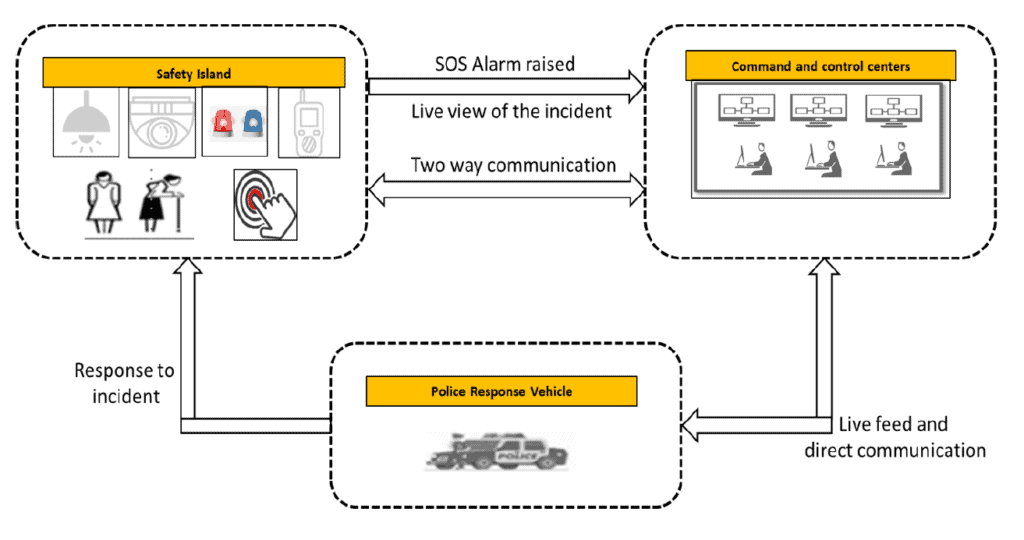Bengaluru will soon have 8600 CCTV cameras monitoring activity in public spaces. While the city currently has around 1,100 such cameras, another 7,500 would be added as part of a new ‘Safe City’ project. One key objective of the project, financed by the Center’s Nirbhaya fund, is to monitor, detect and prevent crimes against women.
What would this massive surveillance project entail – who will look at the footage, how will it be used, and what are the expected outcomes? Here’s what we found, based on the tender documents for the project.
The Centre had approved Safe City projects for Bengaluru and seven other metros in 2018. However, in Bengaluru, the tender process was unsuccessful the first three times.
Last October, the tender was floated for the fourth time by the Bengaluru City Police (BCP) and Honeywell Automation India Ltd – a subsidiary of the US-headquartered MNC Honeywell International Inc – was selected as the service provider. Though the original project cost estimate was Rs 617 crore, Honeywell secured the project based on its lower bid of Rs 496.5 crore.
Only bidders with at least five years experience in the video surveillance domain, who have implemented a similar government project and use proven technologies were to be considered, as per the tender document.

Main components of the project
As per the tender documents, the cameras will be installed and patrol vehicles deployed “around public places frequented by women”. Some key responsibilities of the service provider are:
- A total of 7,500 CCTV cameras to be installed across the city, including:
- Fixed cameras – 6300
- Pan-tilt-zoom cameras – 800
- High-resolution cameras – 400
- Integrating this camera network, over time, with the city police’s 1,100 existing CCTV cameras as well as other cameras in private/public establishments
- Software components to have Video analytics, which includes applications like Facial Recognition System (FRS) and Automatic Number Plate Recognition (ANPR)
- A Data Centre to be set up where feed from all cameras will be stored. Time period of storage:
- Continuous background video recording: 30 days
- Flagged/case evidence data: 60 days
- ANPR and FRS images: 60 days
- Critical incidents: Permanent storage
- A Disaster Recovery Centre to be set up where recordings will be replicated, as backup
- A Central Command Control Centre (CCC) to be set up where data from all cameras will be live-streamed, analysed and alerts generated. CCC is also responsible for coordination in case of emergencies.
- Installing viewing centres at individual police stations and DCP (Deputy Commissioner of Police) offices, of camera feeds from their jurisdictions.
- Setting up a Mobile Command Control Centre, which will have vehicle-mounted cameras to capture images from the ground and send these to CCC.
- Police patrol vehicles to be fitted with Mobile Data Terminals (MDTs) that can receive alerts from the CCC for emergency response.
- Providing 10 surveillance drones and 560 body-worn cameras for use when needed.
- Creating 50 Safety Islands across the city, where citizens can take shelter and press a panic button to contact the CCC, in case of emergencies.
Read more: If only cameras could ensure women’s safety…
According to Nisha James, DCP (Administration), the works are ongoing. She has not responded to further questions this reporter mailed.
Massive surveillance
The tender document gives a tentative list of 2744 locations, selected by the city police, to install the 7500 cameras. The number of cameras proposed in each location vary from one to nine. More cameras are proposed in certain locations – for example, 16 cameras on Church Street, 23 inside Cubbon Park and 30 at Ramaiah Hospital. The sites selected are mainly critical traffic junctions, markets, deserted roads, around educational institutions, offices and transport hubs. The tender document says the list may be modified after the service provider completes their location survey.
In addition to these 7,500 new cameras, the city police plans to tap into its existing network of 1,100 cameras and cameras installed by private/public establishments in and around their premises as mandated by the Karnataka Public Safety (Measures) Enforcement Act, 2017. As per the Act, these establishments are required to install cameras at their own cost, store and make video footage available to the police on demand.
As per the tender documents, Honeywell Automation has to procure licenses for not just the police cameras, but also 10,000 licenses for the cameras in private/public establishments. But it is not clear to what extent the latter would be integrated with the project. The tender documents do mention that the system presently won’t have to account for storage or video analytics from these cameras.

The tender document says that access to cameras and the data recorded will be restricted based on user categories, and that Standard Operating Procedures (SOPs) will be set for different categories of users. But the police has not responded to this reporter’s question on which categories of police officers would be able to access which aspects of the system.
As per the tender document, the service provider will have to pay a penalty of Rs 5 lakh for every security breach (such as unauthorised people accessing video feeds/data). There would also be an evidence management software that records the chain of evidence, with restrictions on user access.
How the system would work
Video feeds from all police cameras will be stored in the Data Centre, and will be live streamed to the Command Control Centre (CCC). The CCC will have a large video wall with the capacity to display footage from 10% of cameras at a time. (Feed from local cameras can also be viewed at the 112 local police stations and eight DCP offices.) Additionally, the Mobile CCC unit will provide footage from the ground to the CCC when required.

How facial recognition and other video analytics would work
CCC will have facilities for video analytics and to coordinate emergency response. As per the tender document, video analytics (including applications like ANPR and FRS) will be used to identify and track people/vehicles involved in harassing women in public places. The system will be integrated with other government databases like Sarathi and Vaahan (vehicle and driving licence databases), prisons and courts databases etc., to get matches on suspects’ photos.
Read more: Missing streetlights, poor signages: Safety audit finds much room for improvement
What can these applications do? As per the tender document, the ANPR system should be able to read number plates with at least 90% accuracy during the day and 70% at night. It should automatically generate an alarm when a camera detects a number plate marked in ‘hot listed categories’ like ‘Wanted’ or ‘Stolen’. Entry/exit points to Bengaluru will be covered with ANPR cameras.
FRS system should be able to recognise full/partial faces from varying angles. It should be able to match faces with images from its database/previous feeds, and track the past movements of these individuals. The system should generate alerts when a blacklisted person is detected on the footage, or when someone is detected in an area where they are not permitted.
Other video analytics features include detecting abandoned objects, fights and violence, and anomalous behaviours like people running during late nights or chain-snatching. The system should also be able to estimate crowd density, and raise an alert in case of erratic crowd movement or possibility of stampede. It should allow person-search by attributes like gender and clothing. It is also supposed to detect fires and potholes.
Honeywell is supposed to procure 1,000 licences for ANPR software – that is, the application should be usable on 1,000 cameras at a time. Similarly, 1,500 licences for FRS, 1,000 for object search application, etc. With Artificial Intelligence and Machine Learning features, the accuracy of video analytics applications should improve over time, the tender document says.
How emergency response would work
The CCC will pass on alerts from the video analytics system to the Mobile Data Terminals (MDTs) installed in police patrol vehicles. Patrol vehicles will then respond to emergencies, and the MDTs will also allow them to send suspects’ photos from the ground to the CCC for verification with the criminal database.
Alternatively, if a citizen is in distress, she can enter a Safety Island and seek help. A Safety Island should have two CCTV cameras, good lighting, beacon lights and sounder, a panic button, and a two-way communication system with the CCC. When a person presses the panic button, the beacon lights will get switched on and an alarm will be raised locally. CCC staff will be able to view and talk to the person, and dispatch the nearest patrol vehicle. Live feed from the Safety Island would be available for the patrol vehicle as well.

Curiously, the tender document says that Safety Islands should be set up in “vulnerable places (like slums and areas having residences of industrial labourers and relatively poor people) which are prone to crime against women and where women are frequently subjected to harassment”.
Though the system is being set up under the Nirbhaya Funds, it isn’t clear to what extent the police will use it for the broader purposes of policing. We haven’t received a response from the police to this question.
Timelines
Honeywell Automation is supposed to finish implementing phase 1 of the project within one year from the effective date of signing their contract with the police; and phase 2 within the second year. Installation of cameras and viewing centres is spread across both phases. BCP has not responded to this reporter’s question on the status of the works.
Honeywell will be responsible for operations and maintenance of the system for five years from the date of contract, extendable by another two years.
Throughout the contract period, the company is supposed to regularly train different categories of police officers on using the system. The tender document also prescribes the penalties they will face for shortage of manpower, not resolving issues quickly, etc.
requesting an update on this.
is there any data provided post the first phase of installation done in 2023?
the focus seems to have shifted to crimes in general. how have these funds been used to prevent/impact crimes and harassment against women, which was the original purpose?